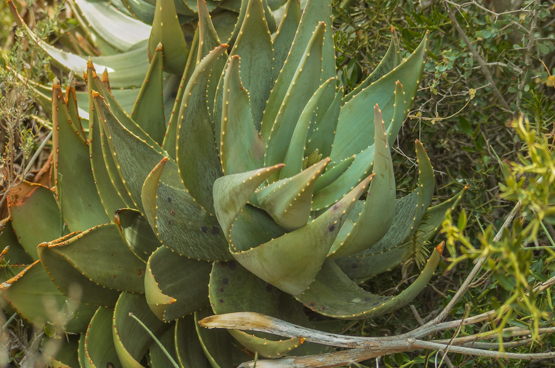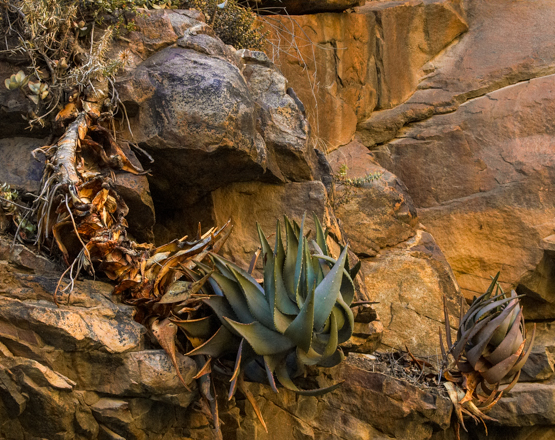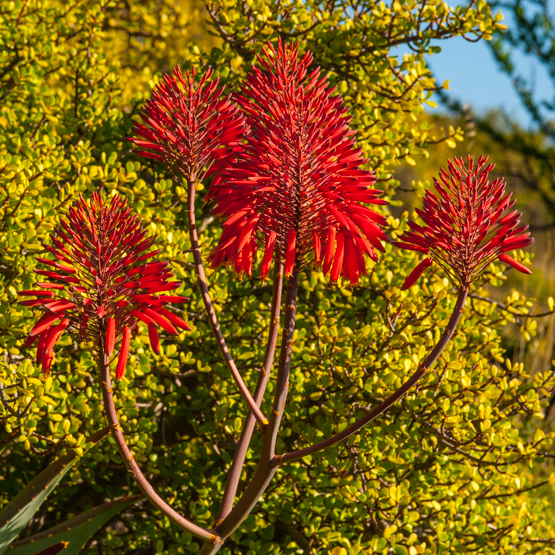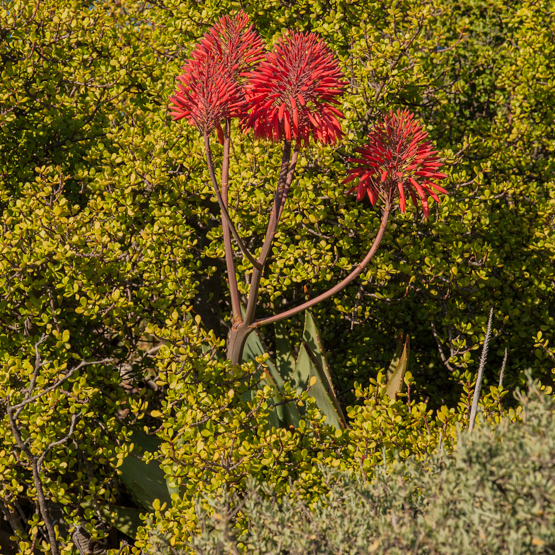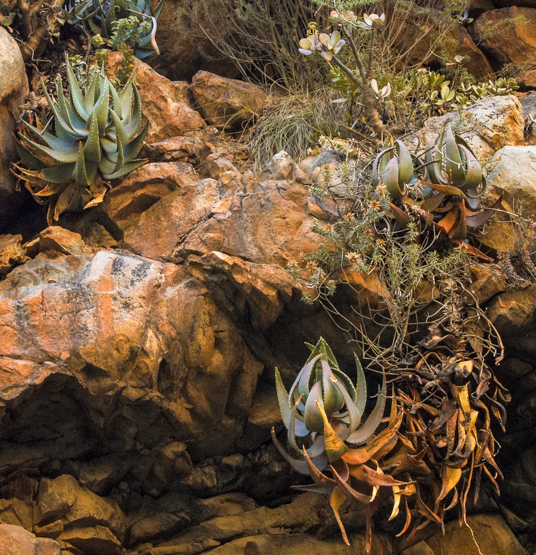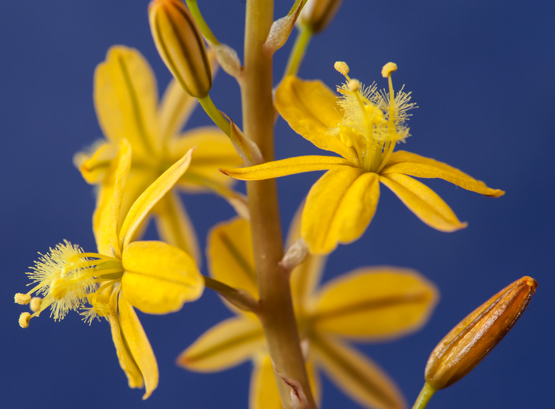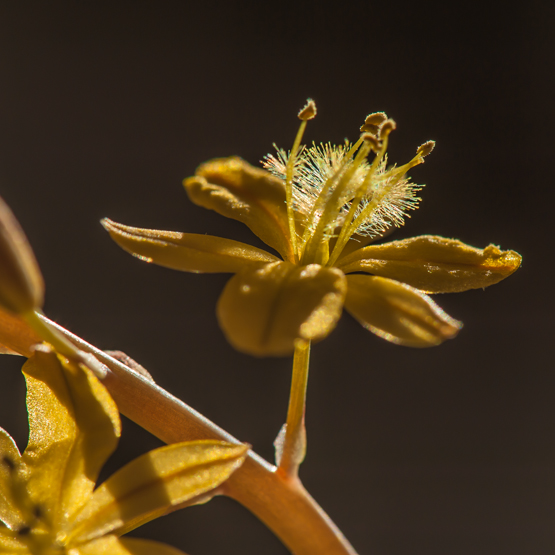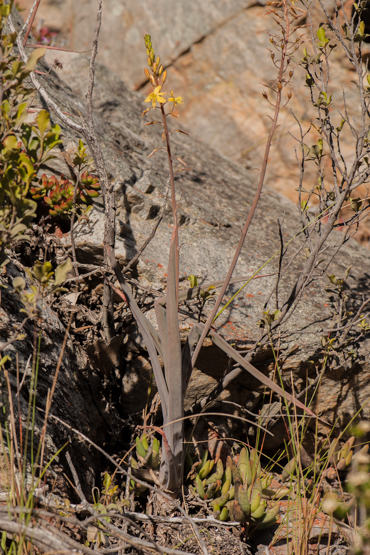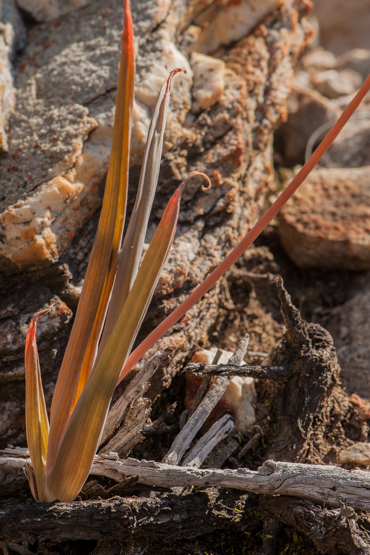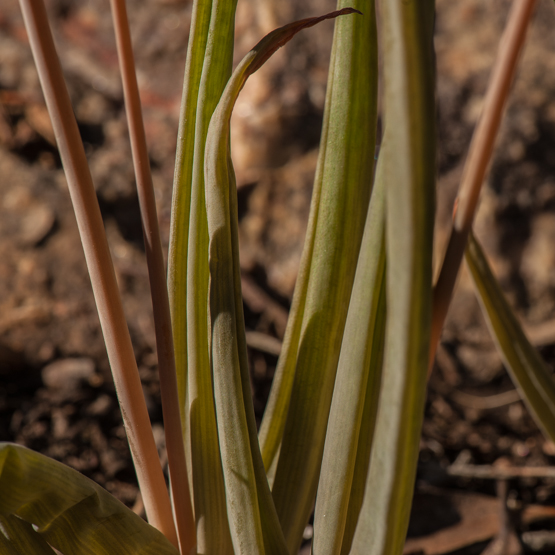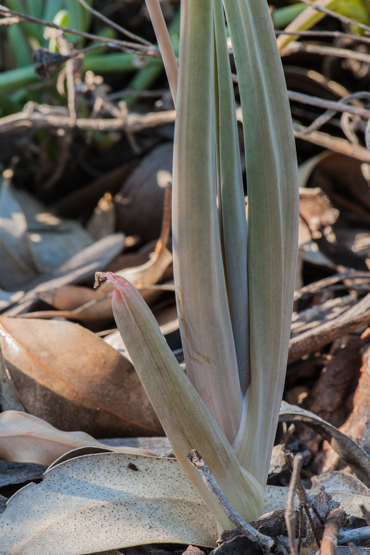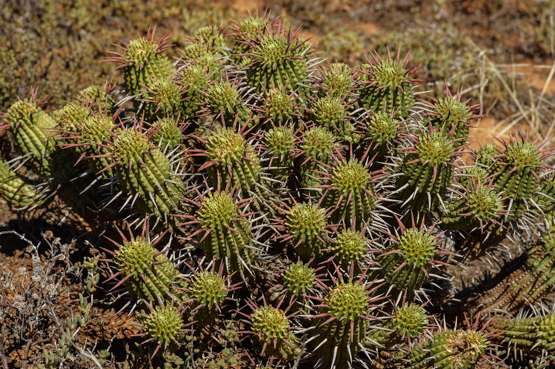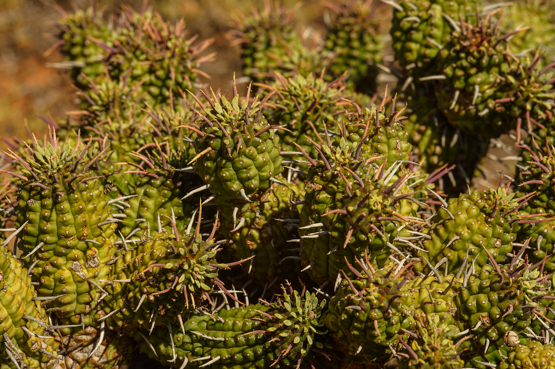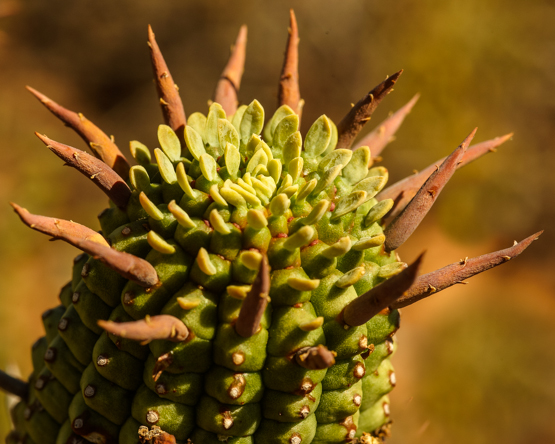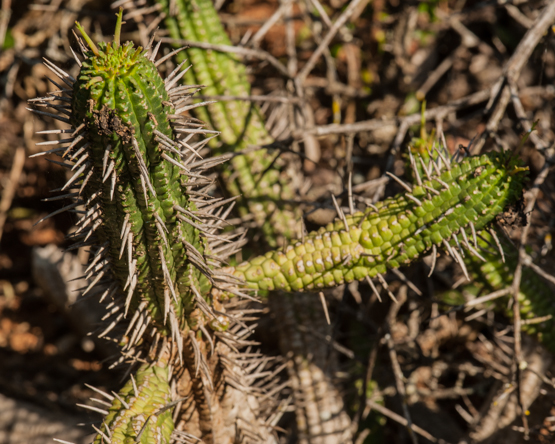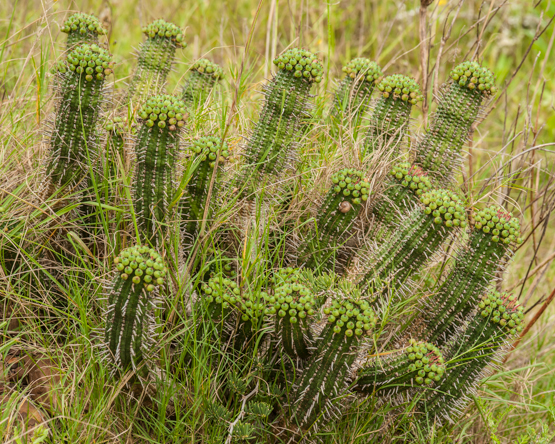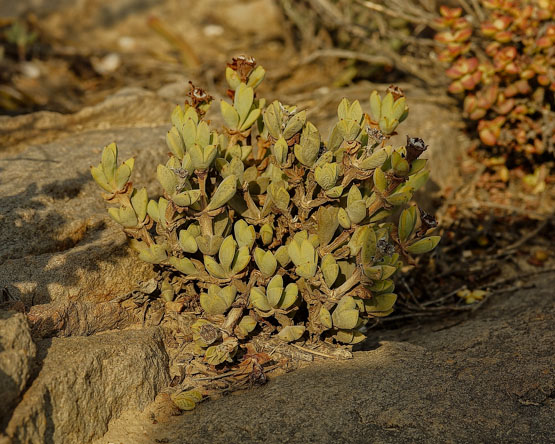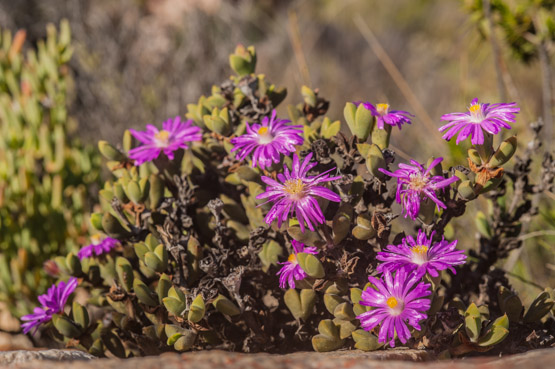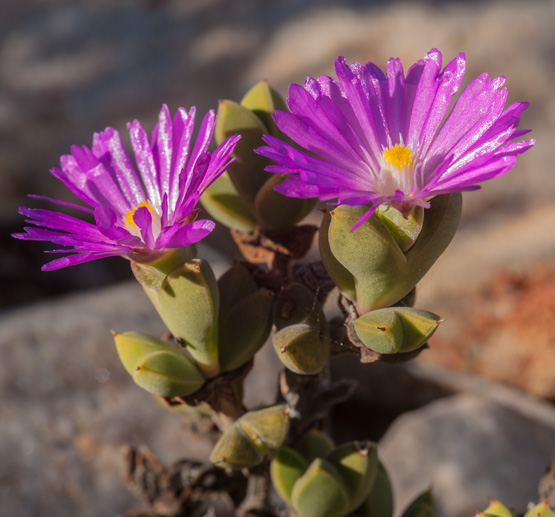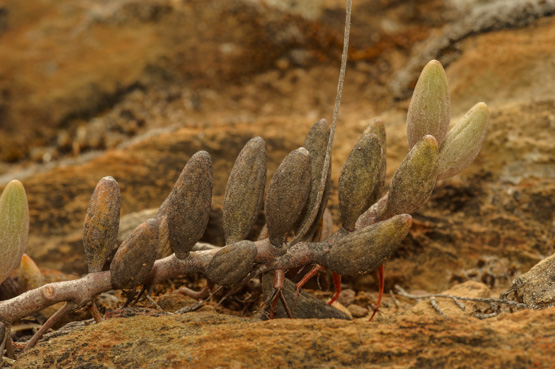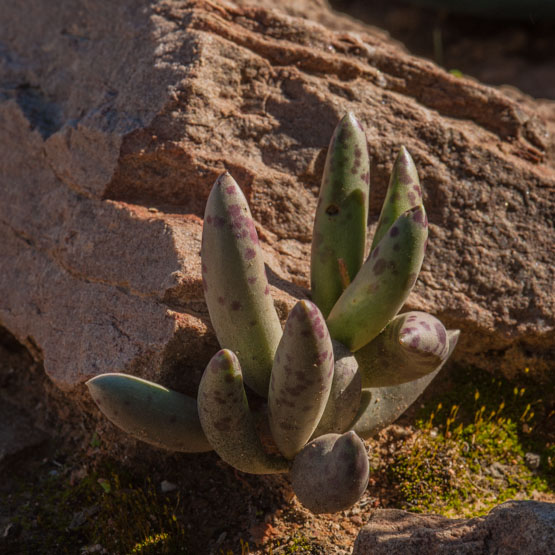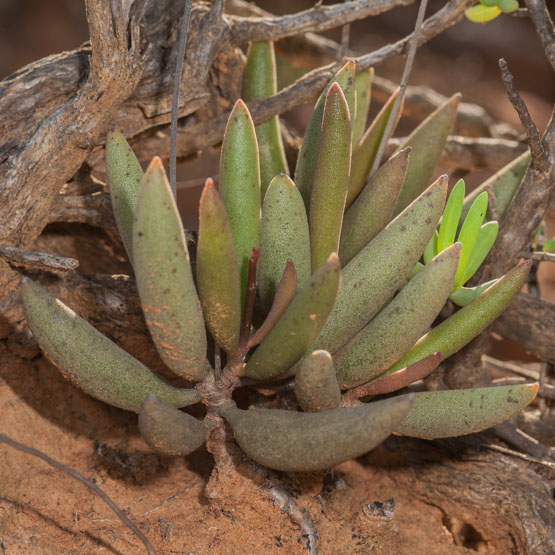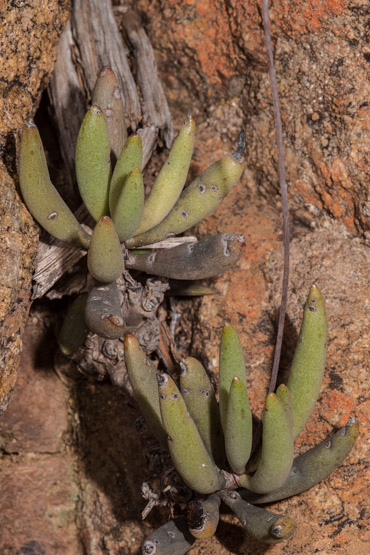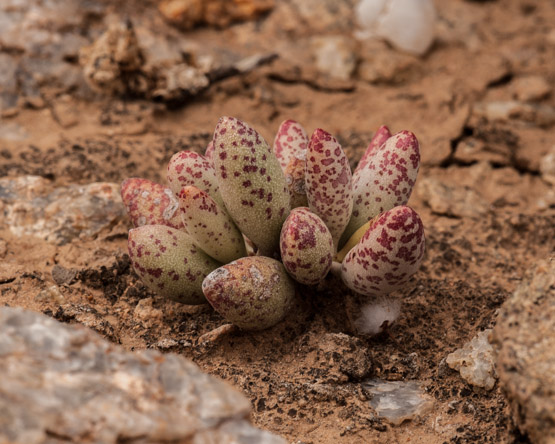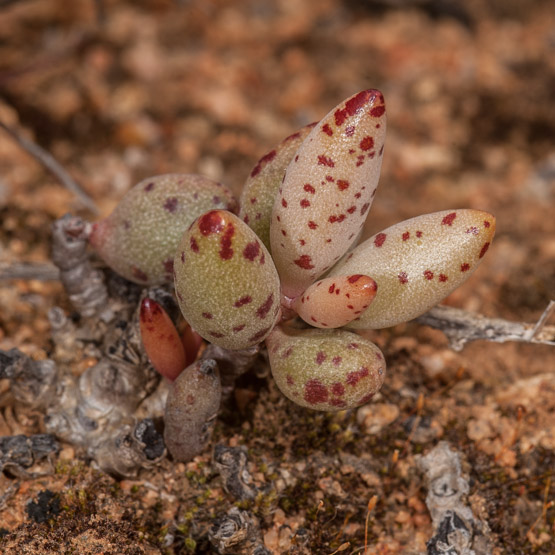Month: August 2014
Aloe perfoliata (1)
In 2000, Glen and Hardy came to the conclusion that Aloe comptonii, A. distans and A. mitriformis were to be united, under the old name A. perfoliata.
This species is most common in the Little Karoo, bur occurs from the Bokkeveld Mountains in the northwest to Genadendal in the south and Uitenhage in the east. The plants are usually found on sandstone or quartzitic outcrops where they often hang down vertical cliffs with stems up to 3 m long. The leaves are bluish-green and up to 25 cm long.
The flowers vary from dull orange-red to bright red and appear from August to February.
Bulbine praemorsa (2)
Today we’ll have a closer look at the plant and especially its flowers.
In yesterday’s post I mentioned the fact that most Bulbine flowers are very similar. That might give one the idea that they are not beautiful or interesting. Hopefully the pictures will convince you of the contrary. (Personally I’m rather chuffed with the last one, where the backlight shows off the bearded filaments beautifully).
Bulbine praemorsa (1)
Bulbines are easy to recognize as such when they are in flower. No other plants that I know of have the same peculiar bearded filaments. In general, the flowers are much of a muchness as to shape and colour (almost always yellow). This is one of the reasons many species are not easy to identify.
B. praemorsa is a common and widespread species, occurring from southern Namaqualand to the southwestern Cape, usually on sandy soils or rocky sandstone slopes.
The plants posses a small tuberous rootstock and long, thick and fleshy leaves that are deeply channeled above. The inflorescences are up to 60 cm tall, with yellow to orange or salmon-coloured flowers which appear from June to September.
Drosanthemum speciosum, decked out with yet another colour
“After three consecutive posts on one species, I will not mention it for a while now. Promise.”
I wrote this in October last year and the species I referred to was the same one as the subject of this post. After being silent on the topic for some ten months, I now have reason to bring it up again.
Last Sunday I visited “Vrolykheid Nature Reserve”, which is situated between Robertson and McGregor. The plant pictured here was only one of a couple of interesting finds this little known reserve proved to have in stock.
When I had a look at some plants of Drosanthemum speciosum with very dark scarlet flowers, I suddenly noticed one plant with exquisite silvery pink flowers. In all other respects it looked like a run-of-the-mill D.speciosum. Nevertheless I checked out all my available literature and found out that the flower colour is described as “red to orange” and” bright orange to crimson”.
The only book with a different opinion is “Vygies, gems of the veld” by Van Jaarsveld en De Villiers Pienaar. What they say is the following: “Flowers up to 50 mm in diameter, usually orange, flaming scarlet or red. There are however yellow, rose-pink and even pale pink or straw-coloured forms of the plant.”
There is a similar species with pink flowers growing near Ceres (D. bellum), but there the leaves are more or les cylindrical and recurved at the tip, whereas in D. speciosum the leaves are “semi-cylindrical or trigonous, incurved like horns”.
Euphorbia mammillaris
The original E. mammillaris was known to occur from the Riversdale district in the west to the Oudtshoorn area in the east. The plants growing there look like the ones in the first 3 pictures.
Pictures 4 and 5 show plants from near Port Elizabeth in the Eastern Cape. They represent what used to be called E. fimbriata, with rather narrower and more sinuous stems. This habit is an adaptation to the growing conditions there: a dense cover of bush or grass as opposed to the open habitats in the west.
Braunsia apiculata
With only five species, Braunsia is one of the smaller genera in the family Aizoaceae.
B. apiculata can be distinguished by its velvety leaves with a recurved, dark, sharp tip (apiculate= abruptly ending in short, spine-like tip).
The showy flowers (about 4 cm in diameter) appear from July to September.
The species is widespread from the Ceres Karoo and Cedarberg Mts. to the western Little Karoo, mainly on sandstone outcrops and shales.
Adromischus filicaulis (part 2: ssp. marlothii)
The only substantial difference between the two subspecies seems to be the fact that ssp. marlothii has stilt-roots. Other differences are more a matter of gradation. The first picture represents what to my mind is the most common (and not terribly attractive) form.
This subspecies is found mainly in the Little Karoo and adjacent areas (from Worcester to east of Oudtshoorn), but occasionally also on the Knersvlakte. It prefers dry rocky slopes, usually in the shade of rocks or other plants.

